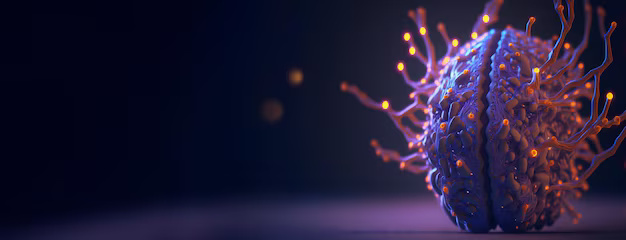Brain-Computer Interfaces (BCIs)
have emerged as transformative tools in clinical neuroscience, providing
innovative approaches to treat neurological disorders, enhance rehabilitation,
and improve patient outcomes.
1. Overview of Clinical
Neuroscience
Clinical neuroscience focuses on
understanding and treating disorders of the nervous system, encompassing a
variety of conditions such as stroke, traumatic brain injury, neurodegenerative
diseases, and mental health disorders. The integration of BCIs within this
field aims to facilitate communication, control, and rehabilitation through
direct interfacing between the brain and external devices.
2. Mechanisms of Brain-Computer
Interfaces
2.1 Signal
Acquisition
BCIs rely on various
methodologies to acquire brain signals, which can be broadly category as
invasive and non-invasive approaches:
·
Non-invasive Techniques:
·
Electroencephalography (EEG): The
most widely used method in clinical BCIs. EEG captures electrical activity
through scalp electrodes and is particularly valuable for its portability and
real-time capabilities. It provides insights into brain states during cognitive
tasks and rehabilitation.
·
Functional Near-Infrared Spectroscopy
(fNIRS): This technique measures brain activity by
detecting changes in blood oxygenation. It is useful for monitoring brain
function in real-time and is often integrated into portable BCI systems.
·
Invasive Techniques:
·
Electrocorticography (ECoG): This
method involves placing electrodes directly on the surface of the brain,
providing high-resolution data. While more invasive, ECoG is advantageous for
patients undergoing neurosurgical procedures and can offer insights into the
brain’s electrical dynamics with greater accuracy.
·
Implantable devices: Systems
such as brain chips allow direct neural signal recording from individual
neurons or small groups. These innovations are primarily under research and
development stages for individuals with severe neurological impairments.
2.2 Data
Processing
After signal acquisition, the
data undergoes several processing steps:
- Preprocessing:
Includes filtering to remove artifacts (noise from blinking, muscle
activity, etc.) and amplification to enhance the signals of interest.
- Feature extraction:
This involves identifying specific patterns or features within the data
that correlate with specific cognitive functions or intentions, such as
movement intention or emotional state.
- Classification:
Machine learning algorithms are employed to analyze the identified
features and classify brain activity into meaningful commands. Examples of
methods include:
- Decision trees
- Support vector machines
- Neural networks
3. Clinical Applications of BCIs
BCIs are being utilized to
address various clinical challenges:
3.1 Neurological
Rehabilitation
· Stroke Recovery: BCIs
can be used to facilitate motor rehabilitation post-stroke by detecting
intention-based brain signals associated with movement and translating them
into command signals that control assistive devices. For example, a stroke
patient might attempt to move a paralyzed limb, and the BCI detects this
intention, activating a robotic arm or exoskeleton to assist with the movement.
· Spinal Cord Injury Rehabilitation:
Patients with spinal cord injuries can benefit from BCIs that communicate
neural signals to robotic systems, allowing for improved mobility and
independence. These systems can help restore partial movement and engagement
with the environment.
3.2
Communication Enhancement
- Locked-in Syndrome:
For patients with severe motor impairments, such as those arising from
locked-in syndrome (where the patient is fully aware but unable to move),
BCIs provide a vital communication pathway. EEG-based BCIs can be trained
to interpret specific brain signals that correspond to phrases or letters,
allowing patients to communicate by merely thinking about those responses.
3.3
Neurofeedback Therapy
- Cognitive and Emotional Regulation:
BCIs are being applied to neurofeedback therapy, where patients are
trained to modify their brain activity associated with cognitive or
emotional processes. For instance, individuals with anxiety may learn to
reduce beta wave activity through real-time EEG feedback, promoting
relaxation and emotional regulation.
3.4 Real-time
Monitoring and Diagnosis
- Clinical Decision Support:
BCIs can provide real-time monitoring of brain activity during surgery or
critical care, enabling anesthesiologists and surgeons to make informed
decisions based on the patient’s neural responses. This capability can
guide interventions and optimize patient safety.
4. Challenges in Clinical BCI
Applications
4.1 Signal
Quality and Reliability
Achieving high-quality, reliable
signals remains a challenge in clinical settings. Factors such as patient
movement, electrode placement, and neurological conditions can impact the
quality of data acquisition and interpretation.
4.2 Individual
Variability
Each patient's neural responses
may vary, necessitating individualized approaches to BCI calibration and
training. Tailoring systems to cater to specific neurological conditions and
responses is crucial for effective implementation.
4.3 Ethical and
Privacy Concerns
The use of BCIs raises several ethical
questions regarding data privacy, patient consent, and the implications of
monitoring brain activity. It is essential to establish guidelines that ensure
the ethical use of this technology in clinical contexts.
5. Future Directions in Clinical
Neuroscience and BCIs
·
Advancements in Technology:
Continued development of non-invasive techniques and hybrid methods that
combine various signal acquisition modalities (e.g., EEG and fNIRS) could lead
to enhanced signal quality and breadth of applications.
·
Integration with Rehabilitation Protocols: Future
BCIs may more effectively integrate with established rehabilitation programs to
provide comprehensive care for patients recovering from neurological injuries.
·
Artificial Intelligence in BCI Systems: The
incorporation of advanced AI techniques can enable adaptive learning systems
capable of refining their responses based on the user's brain activity over
time, enhancing personalization and accuracy.
· Population Health Monitoring: BCIs
could extend beyond individual therapy to monitor and assess population health
trends in neurological conditions, contributing to broader public health data
and interventions.
Conclusion
Brain-Computer Interfaces
represent a rapidly advancing frontier within clinical neuroscience, offering
novel approaches to diagnose, rehabilitate, and improve the quality of life for
individuals with neurological disorders. As technology progresses, BCIs have
the potential to revolutionize treatment paradigms, enhance communication, and
foster independence for patients with severe motor impairments. With continued
research, ethical considerations, and technological innovations, the future of
BCIs in clinical neuroscience looks promising, heralding significant
improvements in patient care and outcomes.


Comments
Post a Comment